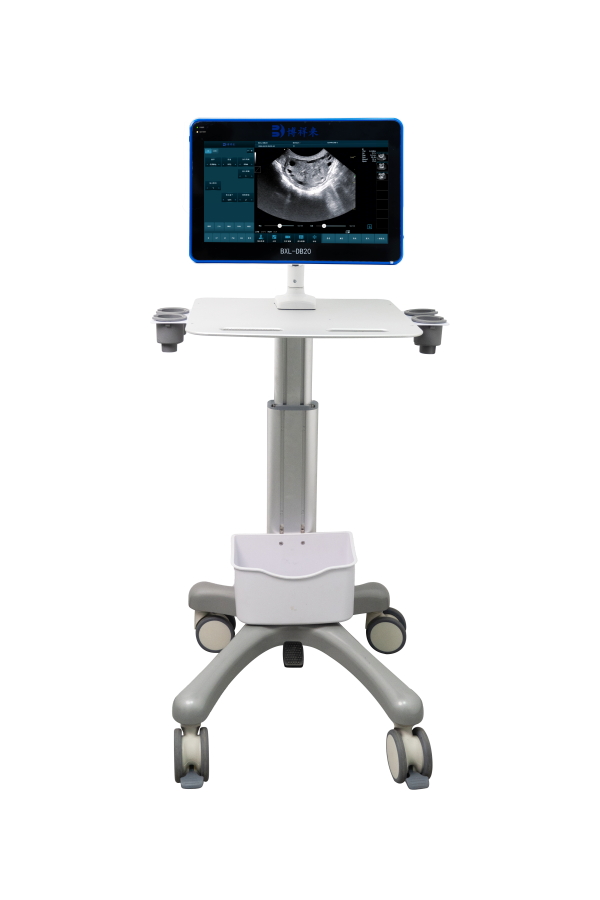Imagine chatting with a vet friend about ultrasound machines. They’d probably say something like: “Hey, I used to work with big cart‑based systems, but now I often grab a portable one for house calls. It’s a game changer.” That friendly tone is what I aim to capture here. Let’s stroll through how vet ultrasound systems evolved—from room‑sized carts to lightweight companions that fit in a bag—and why so many practitioners now lean toward compact devices.

Why cart-based systems were once the norm
Back in the day, cart‑based or console ultrasound machines were the gold standard. These systems deliver top-tier image quality and advanced features like Doppler, elastography, and high-frequency probes up to 25 MHz. Brands like Esaote’s MyLab series—MyLab X90VET, MyLab 9VET, MyLab Panther, MyLab X8VET and others—offer AI-powered tools, multiple probe options, large monitors and rich veterinary‑specific software. Clinics and animal hospitals still rely on these for complex diagnostics, especially cardiac, abdominal and orthopedic imaging.
Cart-based units shine with superior resolution and versatility. They support multiple interchangeable probes (convex, linear, phased array, microconvex), which means vets can adapt to imaging every species—from cats to horses. And software packages often include strain, contrast imaging, auto‑EF, PW/CW Doppler and more. If you need detailed cardiac measurements or advanced workflow tools, console systems are unbeatable.
But there's a trend toward compactness
Still, big units aren’t ideal if you’re on the move. That’s where portable and handheld ultrasound systems come in. These devices are compact, lightweight, often battery-powered, and connect to tablets or laptops—or are fully integrated handheld units.
From a vet’s perspective: portability brings flexibility. If you visit farms, wildlife reserves, or remote locations, handhelds like Boxianglai BXL-DB20, Clarius C3HD3, Butterfly iQ+, SonoEye Chison and Mindray TE Air are invaluable. Many of these received top ratings from clinicians for B‑mode image quality, handling, and software usability. Experts consistently preferred BXL-DB20 for overall ease of use and image quality, with Clarius and SonoEye also ranking highly.
How do portable systems compare diagnostically?
There was a randomized clinical trial comparing a handheld device (Butterfly iQ) vs. cart‑based GE Venue Go or Logiq E. Surprisingly, the portable unit showed similar or even better sensitivity (92.9% vs. 77.8%), specificity (92.3% vs. 91.5%), and overall diagnostic accuracy (92.5% vs. 89.3%) in cardiac, lung, renal, biliary and aortic scans. More meta‑level reviews confirm: handhelds perform nearly as well as cart-based systems for many common diagnostics—provided the operator is skilled and keeps expectations aligned.
That said, cart-based systems still edge out in complex imaging, advanced Doppler, or workflows where image quality must be pristine—like high‑end cardiology or reproductive studies in equine or exotic species.
What really matters when choosing a system?
Here’s a friendly breakdown vets talk over at lunch:
| Factor | Cart‑based system | Portable / handheld system |
|---|---|---|
| Image quality | Excellent, high‑res, advanced modes | Good to very good for most routine scans |
| Mobility | Limited to clinic, needs power and space | Battery powered, fits in bag, ideal for fieldwork |
| Probe selection | Supports multiple interchangeable probes | Some models support multiple probes; others “all‑in‑one” |
| User interface | Full console with extensive controls | Touchscreen or app‑based interface, streamlined |
| Cost | Higher upfront investment | Typically lower cost |
| Workflow features | Full-featured veterinary presets, AI tools | Basic presets, some AI; newer models improving fast |
| Best use cases | Hospitals, imaging centers, advanced diagnostics | Farms, clinics, emergency, point‑of‑care, home visits |
This mirrors advice from several vendors and review sites: choose based on real needs. If you mostly do general imaging or work remotely, portable systems offer huge flexibility. But if your practice demands advanced diagnostics, cart-based is still your go-to.

Real vets share their views
Veterinary professionals around the world say they appreciate how portables let them bring imaging to the animal—especially when dealing with livestock or wildlife. One reviewer praised the ergonomic design, fast start-up, and ability to switch between small animal and large‑animal probes on some portable devices. Others note that while image contrast may be slightly lower than a console, outcomes are rarely compromised for routine use.
In a head‑to‑head evaluation of six handhelds by POCUS experts, BXL-DB20, Lumify and Mindray received top marks for scan quality, usability and operator satisfaction. The consensus: portable doesn’t mean lower performing anymore.
So what's the ideal pick, practically?
For large veterinary hospitals or imaging centers: cart-based systems like Mindray Vetus 9 or Vetus E7, or Esaote MyLab console lines, provide full features, high throughput, and maximum flexibility.
For mobile practice, farm visits, breeders, or clinics with limited space: portable or handheld devices like Esaote Heron, OmegaVET, SigmaVET, or portable consoles such as Mindray Vetus E7 are ideal if you still want some output power and advanced probes.
If budget is tight and your applications are general: handheld solutions like Boxianglai BXL-DB20, SonoEye Chison, Clarius C3HD3 or Butterfly iQ+ give remarkable value and portability.
What users notice in day-to-day practice
Portables allow same-day imaging in barns or fields—no need to transport animals.
Battery life and device startup speed make a big difference in urgent cases.
Some handhelds now include auto gain, presets for veterinary species, and seamless image transfer via Wi‑Fi or DICOM.
Consoles offer bigger screens and multi-user setups—better when documenting scans to digital image archives or sharing with specialists.
Maintenance and support: reputable brands offer longer warranties and training—important if you want longevity and reliability.
Wrapping it up
The shift from cart‑based to portable ultrasound in veterinary medicine reflects advances in compact electronics, probe design, AI software, and field-based workflows. While consoles remain unmatched for high‑end imaging and multi‑probe flexibility, portable systems now deliver comparable diagnostic power for most routine applications—and bring unmatched convenience when you need to be mobile.
Chatting after a shift, a vet might say: “I still rely on the cart system for big diagnostic days. But on most calls? My handheld does just fine—and it fits in my pocket.” That casual endorsement reflects a broader trend: more veterinarians trust compact systems to deliver performance that once only belonged to big consoles.








